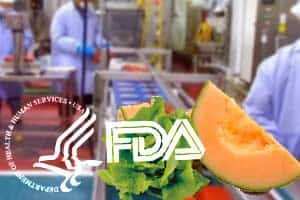
The U.S. Food & Drug Administration just proposed new food safety rules; a move that many feel is long overdue. Described by Laboratory Equipment as “the most sweeping food safety rules in decades” the proposal mandates farmers and food firms to be more stringent in how they process food. Some 3,000 deaths are reported each […]
 The U.S. Food & Drug Administration just proposed new food safety rules; a move that many feel is long overdue.
The U.S. Food & Drug Administration just proposed new food safety rules; a move that many feel is long overdue.
Described by Laboratory Equipment as “the most sweeping food safety rules in decades” the proposal mandates farmers and food firms to be more stringent in how they process food.
Some 3,000 deaths are reported each year linked to food borne illness, said Laboratory Equipment; the proposed regulations aim to reduce these deaths. Last summer, the United States saw outbreaks of Listeria poisoning in cheese, Salmonella outbreaks linked to peanut butter and mangoes, and some 400 food borne illness and seven deaths linked to tainted cantaloupe, according to U.S. Centers for Disease Control and Prevention (CDC) data. Laboratory Equipment noted that actual numbers are likely greater.
The proposed rules mandate farmers take new precautions against contamination such as ensuring workers’ hands are washed, irrigation water is clean, and animals do not enter fields. Food manufacturers must submit food safety plans to the government indicating that their operations are clean and how they would prevent and correct problems, said Laboratory Equipment. Also under the bill, the FDA will be permitted to conduct more surprise inspections and will have increased powers to shut down food facilities; stronger standards will be put in place for imported foods.
According to the government, while many companies and farmers are following these steps, the mandates could have saved lives and prevented the spread of food borne illness in some of the broader outbreaks that have been seen in recent years, Laboratory Equipment noted. “The rules go very directly to preventing the types of outbreaks we have seen,” said Michael Taylor, FDA’s deputy commissioner for foods, according to Laboratory Equipment.
As we’ve explained, a number of issues are leaving Americans vulnerable to food borne infection outbreaks, with reporting of these illnesses being, at best, inconsistent, and leaving most consumers vulnerable before health officials can identify outbreaks and recall contaminated foods. Salmonella appears to be the most prevalent, comprising about 60 percent of the multi-state outbreaks that have been reported in the past five years by the CDC. About 1 million people fall ill yearly with salmonellosis, the illness caused by Salmonella poisoning.
Last year, we wrote that by late 2012, the U.S. has seen food borne illness outbreaks linked to the Salmonella, E. coli, and Listeria pathogen. About 48 million people—one in six Americans—suffers from food borne illness each year, according to data from the U.S. Centers for Disease Control and Prevention (CDC).
Meanwhile, the proposal came exactly two years after President Barack Obama signed food safety legislation passed by Congress. The legislation required the FDA to propose a first installment of the rules one year ago. The Obama administration held off until after the election and food safety advocates sued the administration to win their release, said Laboratory Equipment.
To minimize farmer protests, the farm rules only apply to those fruits and vegetables at the greatest risk for food borne disease, such as berries, melons, leafy greens, and foods often eaten raw. This means that a green bean producer that cans and cooks its produce does not require regulation. A 120-day comment period follows the proposal and the FDA is providing farmers time after that to become compliant; larger farms will not require regulation for over two years and smaller farms will be given more time, according to Laboratory Equipment.


